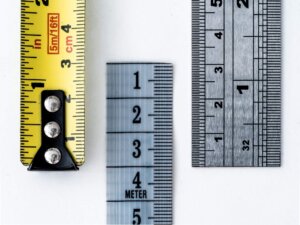When my sister first introduced me to Strava she described it as a social network for runners. I didn’t think I need one, but when I joined eventually (you can’t say no to my sister, trust me), we were both surprised to see how many of my real friends are on there. I explained to my sister, who is 6 years younger than me, that at a certain age everyone starts running. It’s when your body doesn’t stay healthy just by breathing, and you realize you need to start moving. Running is such an easy sport to get into. No long-term commitment to the gym, no dependency on other people, no fancy equipment (at first at least) – that’s how I got into running myself.
One of the things that I love about running is that it allows me time to think. I sometimes run quietly just to clear my mind, while in many other cases I listen to podcasts or audiobooks. I usually run three times a week. On the mid-week ones I listen to professional materials, and on the weekend ones to general or self-development materials.
On my last weekend run, I listened to a fascinating podcast with Adi Soffer-Teeni, Meta’s GM in Israel. Among other things, she mentioned a situation many years ago when she was a newly appointed CEO of some company, and there was a major financial decision she needed to make. They called a meeting with all the relevant stakeholders as well as external advisors, and a few minutes into the meeting she realized that she doesn’t understand what they are talking about.
She said she had three options: trying to figure it out by herself and making a decision, not deciding during the meeting and going quietly to one of the experts to explain it to her after the meeting, or saying out loud that she didn’t understand. She went ahead with the first option, but 10 minutes before the meeting ended she realized she would be making a bad decision, and decided to call the bluff and told the room that she didn’t understand. One of the experts started explaining it, but then an interesting thing happened: other people in the room said that the explanation isn’t right and it wasn’t what they meant.
Soon enough it was clear that Adi was not the only one to not understand. The others might have thought they do, but each attendee understood differently what was agreed on. Imagine the chaos had they decided on something and only upon execution (or worse, upon crisis) realized that they simply didn’t understand each other. Adi’s brave decision to say out loud that she didn’t understand helped everyone make a better decision.
As product leaders, this is one of the most important tools you can use. It is part of your job to make sure people understand the decisions everyone makes the same way. My experience shows that many times further clarification is needed even when everyone thinks they got it.
But there are additional situations where this tool comes in handy. Here are a few reasons to keep saying that you don’t understand. Don’t worry, you won’t look like a fool. On the contrary actually.
It Makes Sense That You Don’t Understand
Some of you might be afraid to say that they don’t understand. You might have an expectation from yourself to fully get it all the time. You might not be willing to show others that you don’t because of what they will think about you. Other than hoping that your company culture allows people to say they didn’t understand without worrying about their reputation, I want to explain why you can never get it all the time. It doesn’t have to do with who you are and what you bring to the job, it has to do with your role as a product leader and the unique perspective that comes with it.
The product leader’s role is a unique one. To do it well you have to be familiar with almost anything that happens in the company. A successful product needs to be sellable, marketable, supportable, and financially viable. There is no other role that needs to connect so many dots together.
But wait, what about the CEO? Isn’t that their perspective exactly? Well, not quite. Unfortunately, many CEOs manage in silos and don’t even try to connect these dots, but even the ones who do, work at a much higher level than you typically do. And at the CEO’s level, it is easy to feel that everything works well together because the devil is in the details.
It is only when you bring your own perspective to the table – the one that tries to connect all the dots but at a much more detailed level than what the CEO has in mind – that the gaps and contradictions appear. There really are disconnects. And sometimes these disconnects would manifest themselves as “I don’t understand it” in your own brain. Remember that in most cases, it’s not that you don’t understand it, it’s that no one else tried to connect the dots at the level that you do, and there are real gaps that you uncover.
They don’t always understand either
I use this technique a lot in my strategic consulting services. It often doesn’t happen as part of a big meeting where a specific decision is made, but rather in strategic discussions with the CEO, the founders, or the product leaders. It goes like this: they explain something to me, and the dots don’t fully connect. I say that I don’t understand and they go at it again. By trying to explain it more clearly, they often think of it again and actually understand it better themselves.
In most cases when people explain how they see things, it is not 100% thought of. They have a certain level of understanding of what they want, but they didn’t necessarily go through the back and forth of making sure it all makes sense.
Note that thinking things through is hard work. It’s much easier and more natural to have a general idea about something and then share it. So don’t hold it against them, and help them make sense of it gradually. One of the ways is to say what you did understand and let them help you connect the dots still left open. Another is to say what exactly you didn’t understand so that they can focus on this specific part. You will need to bring both compassion and commitment to getting things clearer in order for this to work.
There is always more to it
If you feel everyone gets it but you, you might be thinking that you will only disturb them by asking them to go through it again, so you seek other alternatives. But you need to remember that even if they did indeed fully get it (which is oftentimes not the case), these things are complex, and another pass would reveal additional details that might matter to the bigger picture.
I always tell my CPO Bootcamp participants that building a strategy is not like a math exercise. It’s not that there is a formula that you need to follow and you are done. To build a solid strategy, you need to “sleep on it”. You – and everyone else – need to let it rest for a while and then come back to see if it still makes sense. In many cases, these few days bring a fresh perspective that wasn’t there before. So even if they got it a few days ago, going at it once more would probably bring new levels of understanding that were simply hidden before.
Not understanding is of great power because it doesn’t make others feel bad. It’s not like you are telling them that they are wrong – but if they are, they might realize it as they try to explain to you why what they said makes sense. Instead of feeling that it says something bad about you, use it with confidence to help everyone think and make better decisions.









